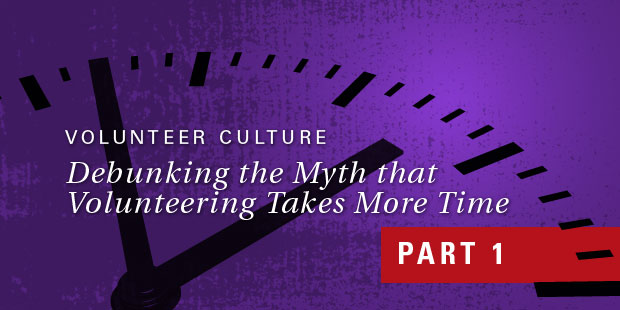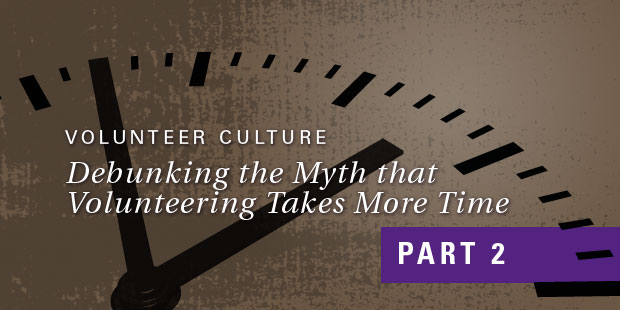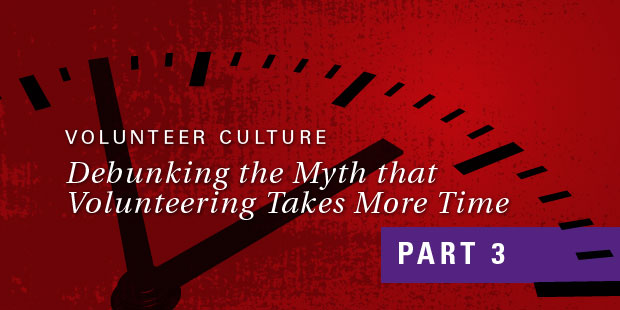
Volunteer Culture: Debunking the Myth that Volunteering Takes More Time – Part 1
I’m often asked what it takes to move a local church from staff-led ministry to ministry led and carried out by teams of volunteers. It’s certainly not an overnight process to make such an intentional change.
Here’s part one of several responses to the question: how do create a culture of volunteering where people choose to step up and serve?
It starts with vision. Someone with respected voice and leadership must cast vision for volunteering, for volunteers serving. That someone will likely be the senior communicator, lead pastor – whatever the role – the person leading the church. Our founding pastor Mark Beeson has taught and practiced for years that the people of the church are the ministers; pastors and other staff empower and equip them to do so. Mark has taught, cast vision, and ramped up volunteer leaders. He has led the way.
I’ve seen a number of churches claim a desire to empower volunteers, but apparently it’s all supposed to be managed behind the scenes through a leader who’s charged with the new initiative: involve our people. However, without vision being cast to the entire church, it will not happen effectively. If it’s a paradigm shift, the senior leader must paint the picture: both why the current strategy can’t continue like it is, and what benefit comes from this new preferred future.
Just in case the senior leader is at a loss for how to teach this value, the scriptures paint quite a convincing paradigm for volunteer-driven ministry. Just sayin’.
Here’s what’s coming in future posts on creating and cultivating a volunteer culture:
- People are busy with a full slate of family activity, personal priorities and work. How and why would people alter their schedule to volunteer, to serve through the local church?
- The church calendar is full. How easy is it for people to make a significant contribution?
- Meaningfully involving professionals in the church community is especially challenging. How do we leverage their leadership as volunteers?
- Serving with friends matters. Task is important; so are relationships.
- What role does serving play in spiritual formation?
Read Part 2 of this series here.
Read more from Mark here.

Tags: Mark Waltz, Serve, Staff, Volunteer Culture
















